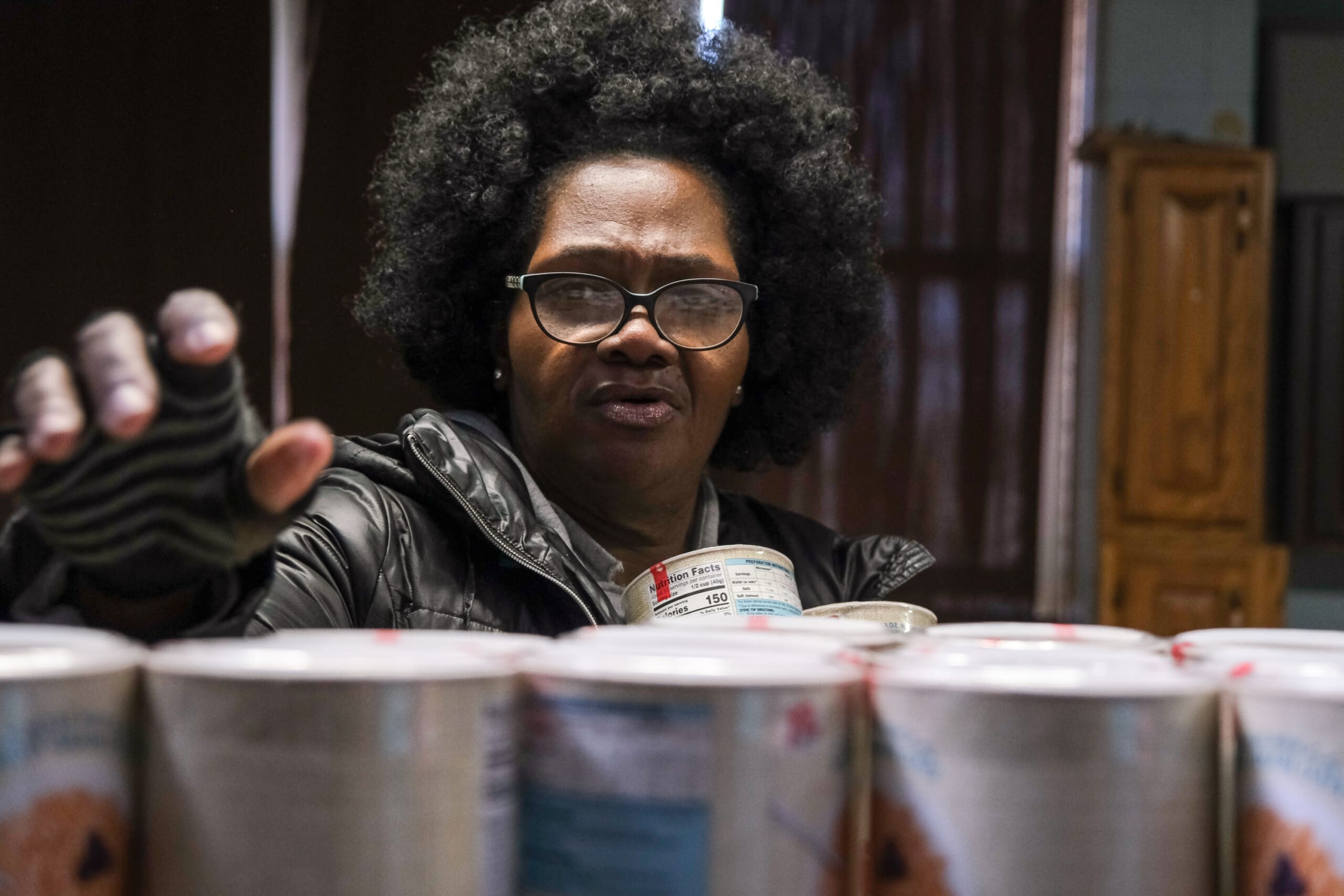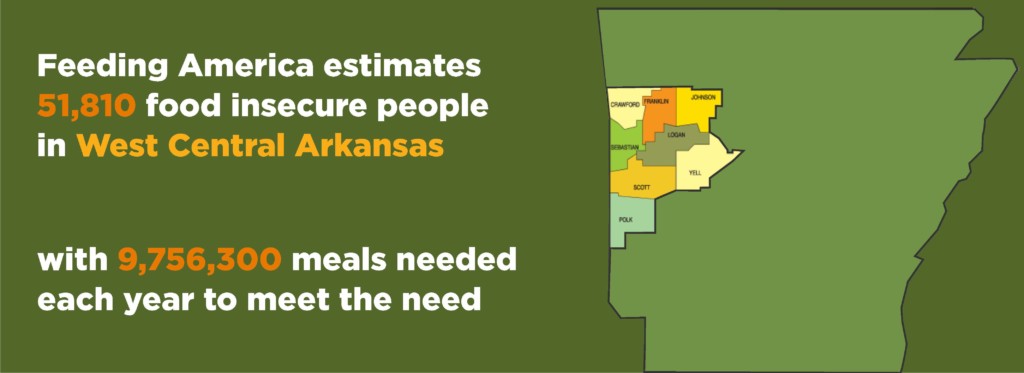
Everyone needs nutritious food to thrive. And, while people are working hard to provide for themselves and their families, more than 50 million people in the U.S. still rely on food assistance from charities like the River Valley Regional Food Bank each year.
Click here to learn more about hunger from Feeding America.
The Food Bank serves an average of 100,000 people in any given month.
In 2023, 18 million pounds were distributed; enough to provide more than 15 million meals!

Food Insecurity affects the overall health and well being of our community.
It burdens our hospitals and severely impacts how our state configures its spending budget!

With the local cost of a meal estimated at $3.22, the total annual food budget shortfall is estimated at $361,481,000.

